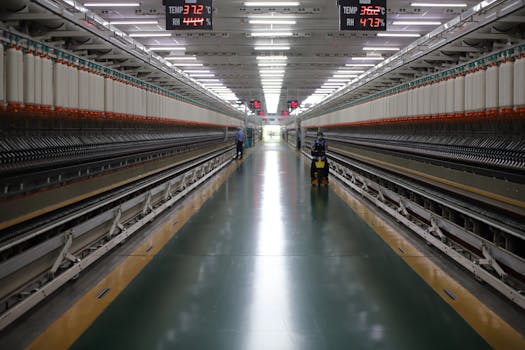
Fiber Futures: Innovations and Trends in Africa’s Textile Industry
Fiber Futures: Innovations and Trends in Africa’s Textile Industry. The African textile industry has long been a significant sector, providing employment and contributing to the continent’s economy. In recent years, the industry has experienced a resurgence, driven by innovations in fiber production, manufacturing, and design. This article will explore the latest trends and innovations in Africa’s textile industry, highlighting the opportunities and challenges facing the sector.
Africa’s textile industry has a rich history, with evidence of textile production dating back to ancient times. The industry has evolved over the years, with the introduction of new technologies and manufacturing techniques. Today, the industry is characterized by a mix of traditional and modern production methods, with a growing focus on sustainability and innovation. The use of natural fibers, such as cotton, wool, and silk, is still prevalent, but there is an increasing interest in synthetic fibers, such as polyester and nylon.
Section 1: Innovations in Fiber Production
One of the key drivers of innovation in Africa’s textile industry is the development of new fiber production technologies. For example, researchers at the University of Witwatersrand in South Africa have developed a new method for producing cotton fibers using a combination of traditional breeding techniques and modern genetic engineering. This new method has resulted in the production of cotton fibers with improved strength, durability, and resistance to disease.
Another area of innovation is the production of sustainable fibers, such as hemp and flax. These fibers have a lower environmental impact than traditional fibers and are becoming increasingly popular among consumers. Companies such as Hemptech in South Africa are leading the way in the production of hemp fibers, which are used to make a range of products, from clothing to building materials.
Section 2: Trends in Textile Manufacturing
The textile manufacturing sector in Africa is also experiencing a period of innovation and growth. One of the key trends is the adoption of digital printing technologies, which allow for the rapid production of high-quality textiles with complex designs. Companies such as Digital Print Solutions in Egypt are at the forefront of this trend, offering a range of digital printing services to textile manufacturers.
Another trend is the growth of e-commerce in the textile industry. Online platforms such as Jumia and Konga are making it easier for textile manufacturers to reach consumers across the continent. This has created new opportunities for small and medium-sized enterprises (SMEs) to enter the market and compete with larger manufacturers.
Section 3: Design and Fashion Trends
Africa’s textile industry is not just about production and manufacturing; it is also about design and fashion. The continent is home to a thriving fashion scene, with designers such as Maki Oh in Nigeria and Loza Malombi in South Africa gaining international recognition. These designers are using traditional African textiles and techniques to create modern, contemporary clothing and accessories.
The growth of the fashion industry in Africa is also driving innovation in textile production. Designers are looking for new and innovative ways to use traditional textiles, such as adire and batik, in their designs. This is creating new opportunities for textile manufacturers to develop new products and production methods.
Section 4: Challenges and Opportunities
Despite the many innovations and trends in Africa’s textile industry, there are still significant challenges facing the sector. One of the main challenges is the lack of investment in infrastructure, including roads, ports, and energy systems. This makes it difficult for textile manufacturers to transport their products and access international markets.
Another challenge is the competition from cheap, imported textiles from countries such as China. This has made it difficult for African textile manufacturers to compete, particularly in the lower-end market. However, there are opportunities for African manufacturers to focus on high-end, niche products, such as luxury textiles and bespoke clothing.
In conclusion, the African textile industry is experiencing a period of innovation and growth, driven by trends and innovations in fiber production, manufacturing, and design. While there are challenges facing the sector, there are also opportunities for textile manufacturers to develop new products, production methods, and markets.